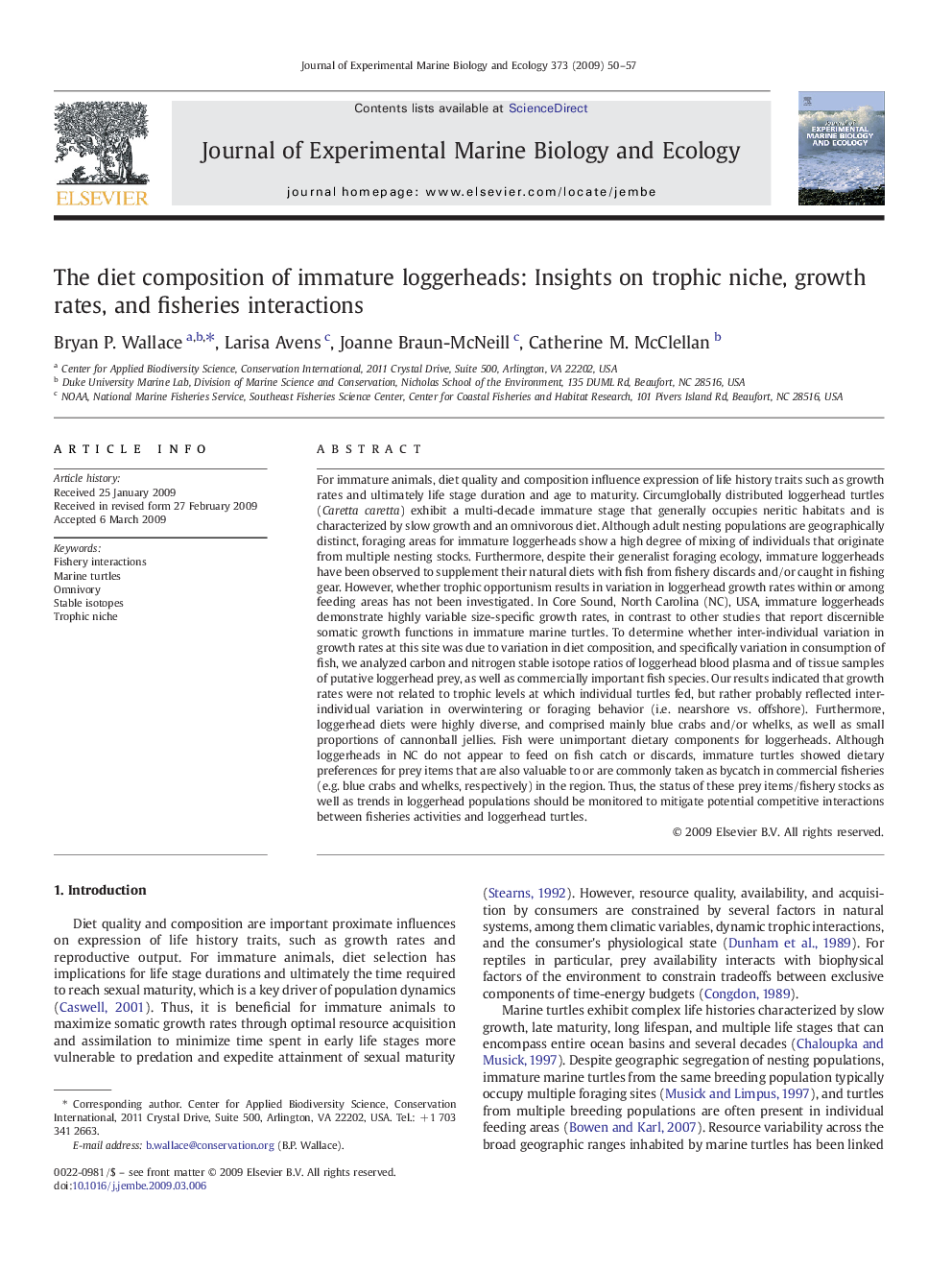| کد مقاله | کد نشریه | سال انتشار | مقاله انگلیسی | نسخه تمام متن |
|---|---|---|---|---|
| 4396892 | 1305850 | 2009 | 8 صفحه PDF | دانلود رایگان |

For immature animals, diet quality and composition influence expression of life history traits such as growth rates and ultimately life stage duration and age to maturity. Circumglobally distributed loggerhead turtles (Caretta caretta) exhibit a multi-decade immature stage that generally occupies neritic habitats and is characterized by slow growth and an omnivorous diet. Although adult nesting populations are geographically distinct, foraging areas for immature loggerheads show a high degree of mixing of individuals that originate from multiple nesting stocks. Furthermore, despite their generalist foraging ecology, immature loggerheads have been observed to supplement their natural diets with fish from fishery discards and/or caught in fishing gear. However, whether trophic opportunism results in variation in loggerhead growth rates within or among feeding areas has not been investigated. In Core Sound, North Carolina (NC), USA, immature loggerheads demonstrate highly variable size-specific growth rates, in contrast to other studies that report discernible somatic growth functions in immature marine turtles. To determine whether inter-individual variation in growth rates at this site was due to variation in diet composition, and specifically variation in consumption of fish, we analyzed carbon and nitrogen stable isotope ratios of loggerhead blood plasma and of tissue samples of putative loggerhead prey, as well as commercially important fish species. Our results indicated that growth rates were not related to trophic levels at which individual turtles fed, but rather probably reflected inter-individual variation in overwintering or foraging behavior (i.e. nearshore vs. offshore). Furthermore, loggerhead diets were highly diverse, and comprised mainly blue crabs and/or whelks, as well as small proportions of cannonball jellies. Fish were unimportant dietary components for loggerheads. Although loggerheads in NC do not appear to feed on fish catch or discards, immature turtles showed dietary preferences for prey items that are also valuable to or are commonly taken as bycatch in commercial fisheries (e.g. blue crabs and whelks, respectively) in the region. Thus, the status of these prey items/fishery stocks as well as trends in loggerhead populations should be monitored to mitigate potential competitive interactions between fisheries activities and loggerhead turtles.
Journal: Journal of Experimental Marine Biology and Ecology - Volume 373, Issue 1, 15 May 2009, Pages 50–57